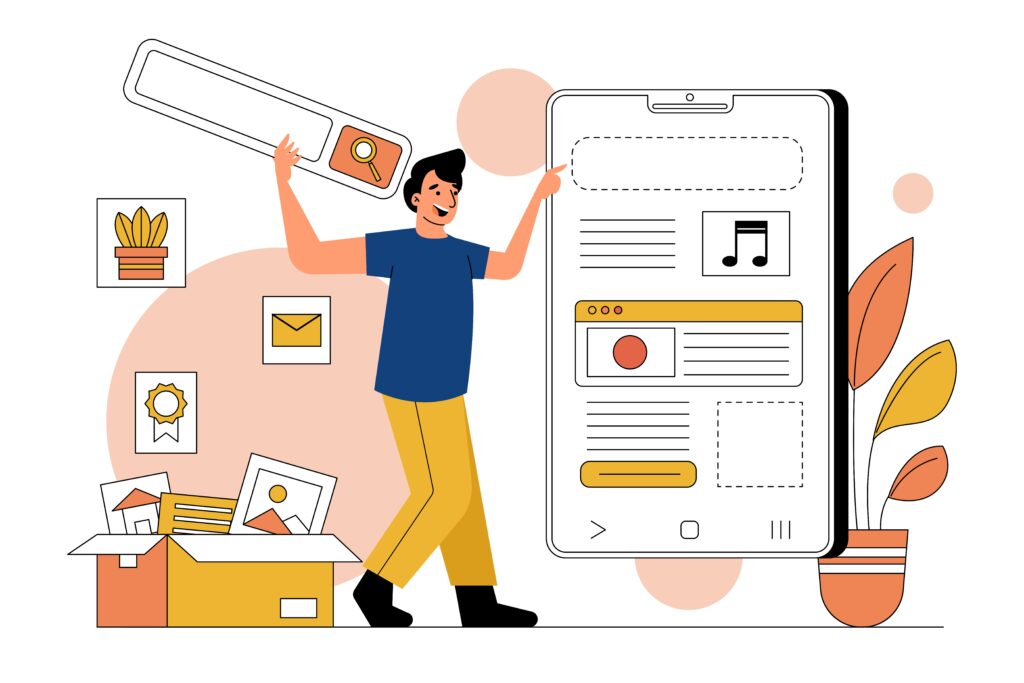Have you ever tried accessing a website on your phone or tablet, only to find that it’s not optimized for mobile devices? You have to pinch and zoom just to read the text, and the buttons are so small that it’s difficult to navigate. It’s frustrating, right? Well, you’re not alone. In fact, many people have the same experience. As more and more people are using their mobile devices to access the internet, it’s becoming increasingly important for websites to be responsive. So, let’s have a look at why responsive web design is a must-have for your online business’s success.
What Is Responsive Web Design?
Responsive web design refers to a design approach that allows a website to adapt to various screen sizes and devices. Essentially, it means that your website will look and function the same on a desktop, tablet, or smartphone. In the past, web designers used to create separate websites for different devices, but with the rapid increase in the number of devices with different screen sizes, this approach was no longer feasible. Instead, responsive web design allows web designers to create a single website that can automatically adjust to fit any screen size. The result: Your website will look great and function smoothly on any device.
Why Responsive Web Design Is Important for Your Business’s Success
Responsive web design is not just a design trend but a necessity for your online business. So, let’s dive into the details and explore why responsive web design is essential.
1. Better User Experience

A positive user experience is key to your website’s success. When a user lands on a website that is not tailored to their device, they are more likely to leave and go to a competitor’s site. This is because the website may not load correctly, and the user may have trouble navigating through the content. A poor user experience can cause frustration, confusion, and generate a negative impression of your brand.
On the other hand, a responsive website offers a seamless and enjoyable experience. It provides an optimized layout with easily readable and navigable content that adjusts to fit the screen size of any device. Users should never have to zoom in to read the text on your website, as it should automatically adjust to fit the screen size. The same goes for the navigation menu. If it’s too small or difficult to locate, users will have trouble navigating through your website and are more likely to leave.
Furthermore, responsiveness enhances the speed and performance of your website. By optimizing your website for mobile devices, it loads faster, reducing the time it takes for users to access your content. This is especially important for users who are on the go and may not have a stable internet connection.
2. Increased Mobile Traffic
In recent years, there has been a significant increase in the number of people accessing the internet on mobile devices. In fact, more than 50% of all internet traffic comes from mobile devices. Mobile users are often searching for information while on the go. They may have less time to browse your website and need to find information quickly. A website that is not optimized for mobile devices can hinder easy navigation through the content, causing frustration and possible abandonment of your website. As such, failing to implement responsive web design means you risk missing out on a large potential audience.
3. Improved SEO

Responsive web design can positively impact your website’s SEO, resulting in improvement in user engagement, visibility, and ranking. Search engines like Google give preference to websites that are mobile-friendly, and they are more likely to rank them higher in search results. Also, a responsive website is easier for search engines to crawl and index. In contrast, websites that are not optimized for mobile devices often suffer from high bounce rates and low user engagement, which can negatively impact their SEO ranking.
4. Cost Effectiveness
Previously, businesses were compelled to create separate versions of their website for desktop and mobile devices. This was not only time-consuming but also costly, as it required additional resources to maintain multiple versions of the website. With a responsive web design, you only need to maintain and update one website, which saves you time and money in the long run. Moreover, a responsive website can mitigate the possibility of potential losses in sales and revenue, as it reduces the risk of users leaving your website and looking for alternatives.
5. Easy to Manage

Have we mentioned that with a responsive design you only need to manage one version of your website? Well, in case it wasn’t clear: Responsive web design offers the benefit of only having to manage one website, making it easier to keep your content up to date. Furthermore, it can also reduce the need for custom coding. Creating separate versions of your website for desktop and mobile devices often requires custom coding to ensure that the website works correctly on each device. Responsive design eliminates the need for customized codes.
Tracking website analytics has also become more manageable now. With a single website, it is easier to track website traffic, user engagement, and conversion rates, giving you valuable insights into how your website is performing.
6. Future-Proof
In a world where technology changes within the blink of an eye, the fear of being left behind is ever-present. But don’t worry, with a responsive website you can sit back, grab some popcorn, and watch as others try to catch up with the constant changes. The need to redesign your website every time a new device with a different screen size is released is a phenomenon of the past. Your website will be able to adjust to any screen size, ensuring that it remains functional and accessible for years to come.
Tools That Can Help You Create a Responsive Website
There are various software and plugins available that can help you create a seamless user experience on your website. These are a few:
WordPress
WordPress is one of the most popular content management systems (CMS). It offers a range of plugins and tools that can help you create a responsive website.
Among the most popular WordPress plugins for creating a responsive website is the Jetpack plugin. It provides various features that can help you optimize your website for mobile devices, including mobile theme support, responsive images, and accelerated mobile pages (AMP) support. You can also choose between different security features, performance optimization, and website statistics that help you improve your website’s performance.
WPtouch Mobile Plugin is another useful plugin. It is a mobile plugin that automatically transforms your website into a mobile-friendly version. With WPtouch, you can customize the appearance of your website for different mobile devices, without any coding knowledge. Features, such as mobile-specific menus, mobile search, and touch-based navigation, are also included.
Bootstrap
Bootstrap is a popular front-end framework that provides tools and resources to help developers create responsive websites quickly and easily. It is designed to make website development more efficient, with pre-designed templates, UI elements, and other features that can be customized to meet specific design and functionality requirements.
One of the main features of Bootstrap is its responsive grid system. It is a set of CSS classes that can be used to create responsive layouts quickly and easily. The grid system is based on a 12-column layout, and it automatically adjusts to fit different screen sizes. This means that developers can design websites that look great on any device, without having to write a lot of custom code.
Bootstrap also provides many typography styles, such as headings, body text, and lists, that are optimized for readability and legibility on different screen sizes. This ensures that the website’s content is easy to read and navigate on any device, making for a more seamless user experience.
Squarespace

Squarespace is an all-in-one platform that provides a plethora of tools for website design, e-commerce, and marketing, making it a popular choice for small businesses, creatives, and entrepreneurs. Its pre-designed templates are optimized for mobile devices, providing responsive design options that ensure that your website looks great on any device. The templates are highly customizable, with drag-and-drop functionality that allow you to create a unique website that meets your specific needs.
There are also some plugins and integrations that can help you create a more responsive website. For example, the Squarespace Mobile Information Bar is a plugin that adds a customizable bar to the top of your website on mobile devices. This bar can display important information, such as contact details or opening hours, and ensures that users can access this information quickly and easily.
Stay Ahead of the Curve With Responsive Web Design
A responsive website not only provides a better user experience, but also increases mobile traffic, improves SEO, and is cost-effective. By investing in a responsive website, you can ensure that your website is accessible to everyone, regardless of the device they are using. So, if you haven’t already, it’s time to make the switch to responsive web design and stay ahead of the curve.
If you’re looking to create a responsive website for your business, working with an agency such as Bright Development can be a great choice. We offer a range of services to help you create a website that is optimized for any device. Whether you need a custom design or want to use a pre-designed template, our team can help you create a website that looks great and provides a seamless user experience. Schedule a free consultation with us today, so we can talk about your project and answer your questions.


